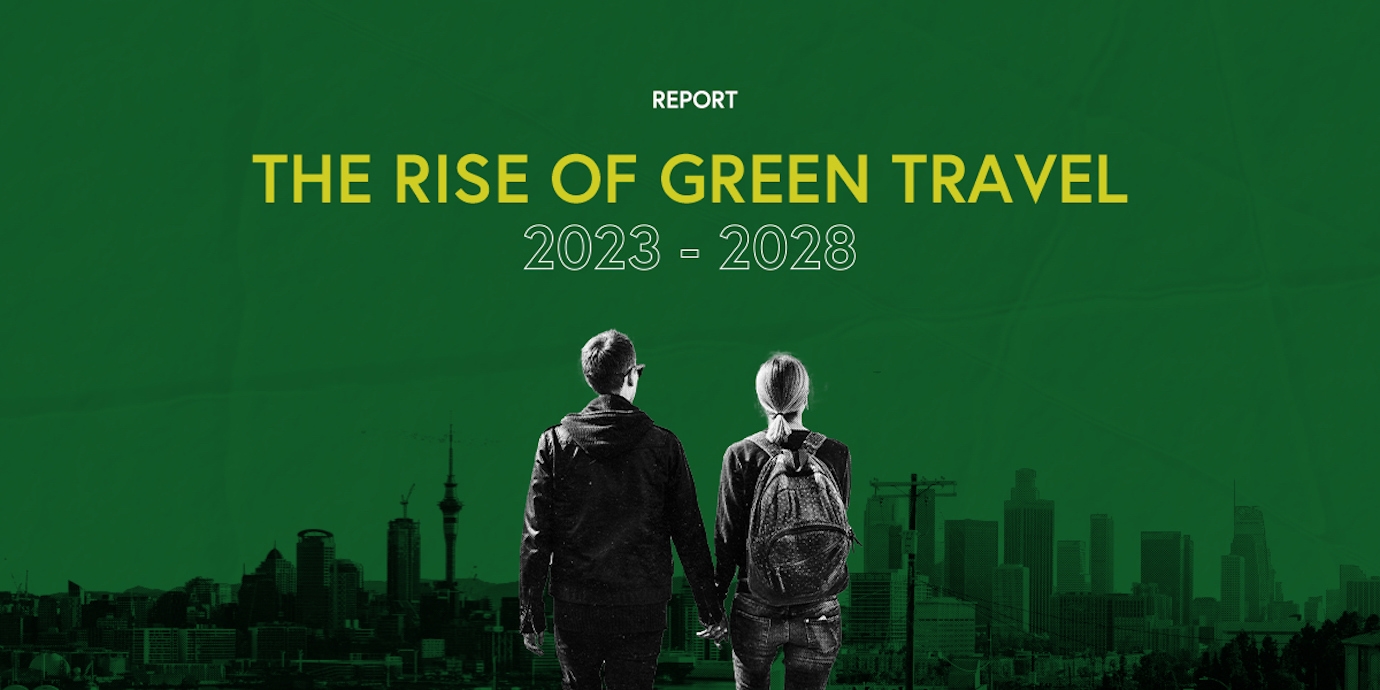ARTICLE
Holly Boyd-Boland, VP Corporate Development & Sustainab ...

Our new Rise of Green report maps out a possible future of green travel and explores major advancements set to take place in the aviation sector by 2028. Download it here.
Can you imagine what might a journey, e.g., from New Zealand to Los Angeles for the 2028 Summer Olympics, look like?
In particular, where will aviation be on the road to net zero, and what differences will passengers notice?
In our new report ‘The Rise of Green Travel’, we track a hypothetical journey from Hamilton, New Zealand to Long Beach, California in early July 2028, just before the Summer Olympics, and highlight the potential developments likely to revolutionise aviation in the next five years.
We’ve chosen Hamilton, New Zealand, as our starting point as it links to a comment made by Air New Zealand CEO Greg Foran at the 2022 APEX/IFSA EXPO. When asked about electric flights, he responded by saying that you could be “thinking about it like an Uber. It’s basically just shuttling backwards and forwards between Hamilton and Auckland, and it’s maybe going every 30 minutes, and you just turn up and pay for it when you get on the plane. Why not?”
The report also features major advancements expected to impact aviation by 2028, including the rise of eVTOLs, Regional Air Mobility, and innovations onboard aircraft and at airports.
On long-haul flights, things won’t be much different than they are today.
The supply of sustainable aviation fuels (SAF) will have increased with a number of new facilities coming on stream between now and 2028.
Additionally, with more emphasis being put on the sustainable cabin, passengers can expect to see a greener passenger experience, including amenity kits made from sustainable materials and the phasing out of single-use plastics.
However, a more noticeable difference will be in shorter regional aviation:
eVTOLs (electric vertical take-off and landing aircraft) or ‘air taxis’ will likely become as cheap and ubiquitous as ride-sharing services. Notwithstanding variations in technology, these aircraft can be expected to carry anywhere from two to six passengers up to a range of 100-200 miles on a single charge.
Regional Air Mobility (RAM) will have undergone a revolution and we might see low- and zero-emission aircraft in our skies.
Airports will have their own renewable energy electricity grids to charge aircraft and power the infrastructure. From carbon-capturing runways to energy-efficient buildings, sustainability will be integral to airport design.
Battery technology will have evolved to make electric flights a reality.
Circularity will be embedded into the in-cabin experience. New materials will be used in everything from amenity kits to catering supplies.
Subscribe to our weekly Sustainability In The Air newsletter and receive our in-depth analysis and updates on all things aviation sustainability straight into your inbox!
© 2022 SimpliFlying Pte. Ltd.